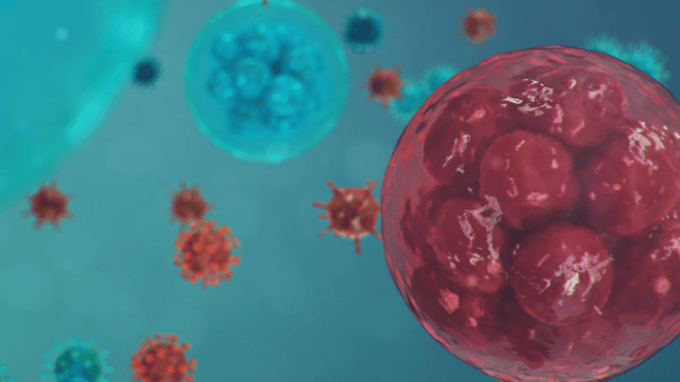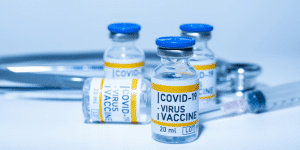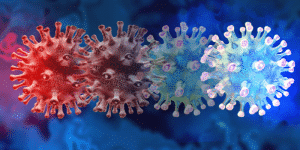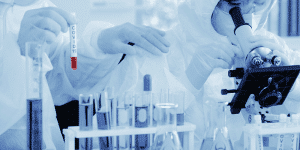Oocytes are cells within the ovaries, also known as immature eggs, or immature ovum, these cells develop to maturity within a follicle and provide the source of cells for embryonic development. Needless to say, oocytes are an essential part of women’s fertility and ensuring their health and functionality remain at top notch is key to reproductive health. Because of this, fertility researchers and scientists have taken note of impacts that various conditions and infections can have on them. Among some of the newest studies regarding oocytes health and influencing factors is the COVID-19 virus, also known as SARS-CoV-2.
There’s no doubt, the COVID-19 pandemic has brought with it, years of concern and monitoring its vast array of symptoms, risk factors, variants, and long-term impacts on men and women’s health. Among the concerns include the impact the virus shows to have on fertility and specifically, on oocytes.
Four Ways COVID-19 Impacts Oocytes
First, we should consider some basic facts scientists know about oocytes. It is well known that oocytes develop in the ovaries as an immature egg cell. Throughout the process of ovulation, this oocyte eventually matures and becomes an ovum, or egg, which is then released from the ovary and continues down the fallopian tube where fertilization may occur. A fertilized egg then moves forward with the conception process into the uterus where the rest of the pregnancy process occurs, however a released egg will die, or dissolve, within 12- to 24-hours if it is not fertilized. If fertilization does not occur, the egg and uterine lining will shed, resulting in menstrual bleeding about two weeks later.
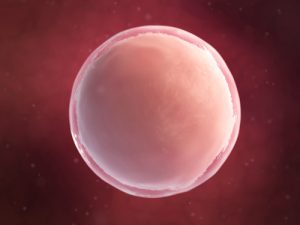
Scientists know that throughout the oocyte development, a series of changes regulated by genes occurs. The cell undergoes a sequence of changes transforming from an immature stem cell to an oocyte. While a number of processes occur during the development and maturation process, several of these changes appear to be affected by factors such as COVID-19.
There appear to be many different factors that affect the genome, or set of DNA instructions, found in a cell and single-cell genome analyses of oocytes are important for meiosis research and preimplantation genomic screening.
Among the many factors that can affect the genome are, for example, what is known as an epigenetic modification, when enzymes called histone methyltransferases (HMTs) or histone demethylases (HDMs), will either add or remove methyl groups from histones (proteins that act as supportive material for chromosomes, so they work in conjunction with DNA to help structure chromosomes). Usually, these modifications wouldn’t change the DNA: instead, they serve as markers for the genome’s expression and maintenance. It makes it possible for HMTs and HDMs to regulate gene expression without changing the DNA sequence itself, however, COVID-19 research indicates that infection of the virus may affect the genome through DNA damage.
The genome is a complex structure, so there will be many different ways it can be damaged. There can be alterations in DNA due to faulty methylation, which can lead to noncoding RNA accumulation, cell death, and genome instability. Most of these are not fatal in and of themselves, but they can accumulate until the cell’s death becomes inevitable or even until several cells die. Many different types of DNA damage can occur, but it has been found that COVID-19 may play a part in the process. In one study research was performed to determine how COVID-19 can affect oocytes by looking at different DNA damages, and the results of that study serve as a starting point. The study found a significantly higher amount of different types of DNA damage in samples with COVID-19 overexpression than in samples without.
Another possible effect of COVID-19 on oocyte is what is known as apoptosis. Apoptosis is when the cell dies. Even though it is necessary for development, scientists would like to avoid it because it can lead to congenital disabilities or new diseases. Apoptosis occurs when the cell undergoes several changes, which usually require the activation of several different proteins. While research is still being conducted on exactly how COVID-19 plays a part in the process, it has been found that overexpression of COVID-19 can lead to apoptosis, which has been increasingly found in respiratory function.
Several other essential genes are involved in DNA damage and apoptosis. These include genes of the BCL2 family, genes with the CXXC motifs, and others. These genes help to regulate different areas of cell survival. Knowing this, researchers can suggest that COVID-19 may affect oocytes, by impacting the regulation of these critical genes that control these processes. Thus, it is suggested that COVID might affect oocyte development in some way.
Research has broken down the contraction of the virus and discovered that for COVID-19, SARS-CoV-2, to enter the body and replicate, it binds with a type of protein expressed and found in the cells in the lungs, mouth, heart, and other body parts including the testes, spermatogonial stem cells, ovaries, uterus, vagina, and placenta. This protein is known as angiotensin conversion enzyme 2 (ACE2) receptor. Those tissues and organs with ACE2 receptors are thus more susceptible for the virus to infect and damage them.
Research has shown cases where female reproductive health may be affected by COVID-19 infection, as the oocytes and ovarian tissue express medium to high levels of ACE 2 receptor, and in one study the quantity of retrieved and mature oocytes was reduced in patients with higher levels of COVID-19 antibodies.
In cases of COVID-19 infection, acute phase response leads to what is called a cytokine storm, a sever immune reaction in which the body releases an abundance of cytokines into the blood too quickly. While the role of cytokines is to aid in normal immune responses, a surplus of these can be harmful to the body and lead to a variety of issues including increased inflammation and surges of reactive oxygen species (ROS), a buildup of which may cause damage to DNA, RNA, and proteins, and may even result in cell death. Research has found that even short-lived ROS can produce instant and irreversible effects on the final stages of oocyte development for fertilization, known as the oocyte spindle.
Another impact of COVID-19 on oocyte health and functionality is found in the impact it can have on nitric oxide bioavailability. One of the many roles of NO is found in the regulatory effects on ovulation, oocyte development and the luteal phase. In cases of critical COVID-19 infection, a decline in NO was observed, indicating a ripple effect in the body including generation of peroxynitrite (ONOO–) (a short-lived ROS) and ROS overproduction, ultimately leading to cell damage.
With the current research results and continuing studies, studies are showing that COVID-19 can have a variety of effects on oocytes and thus female fertility. Due to the delicate nature of these cells, they can be susceptible to damage and the perfect grounds for negative impacts from the COVID-19 virus.
Although, scientists do not know everything about how COVID-19 can affect oocytes, they continuing their research to find out more.
